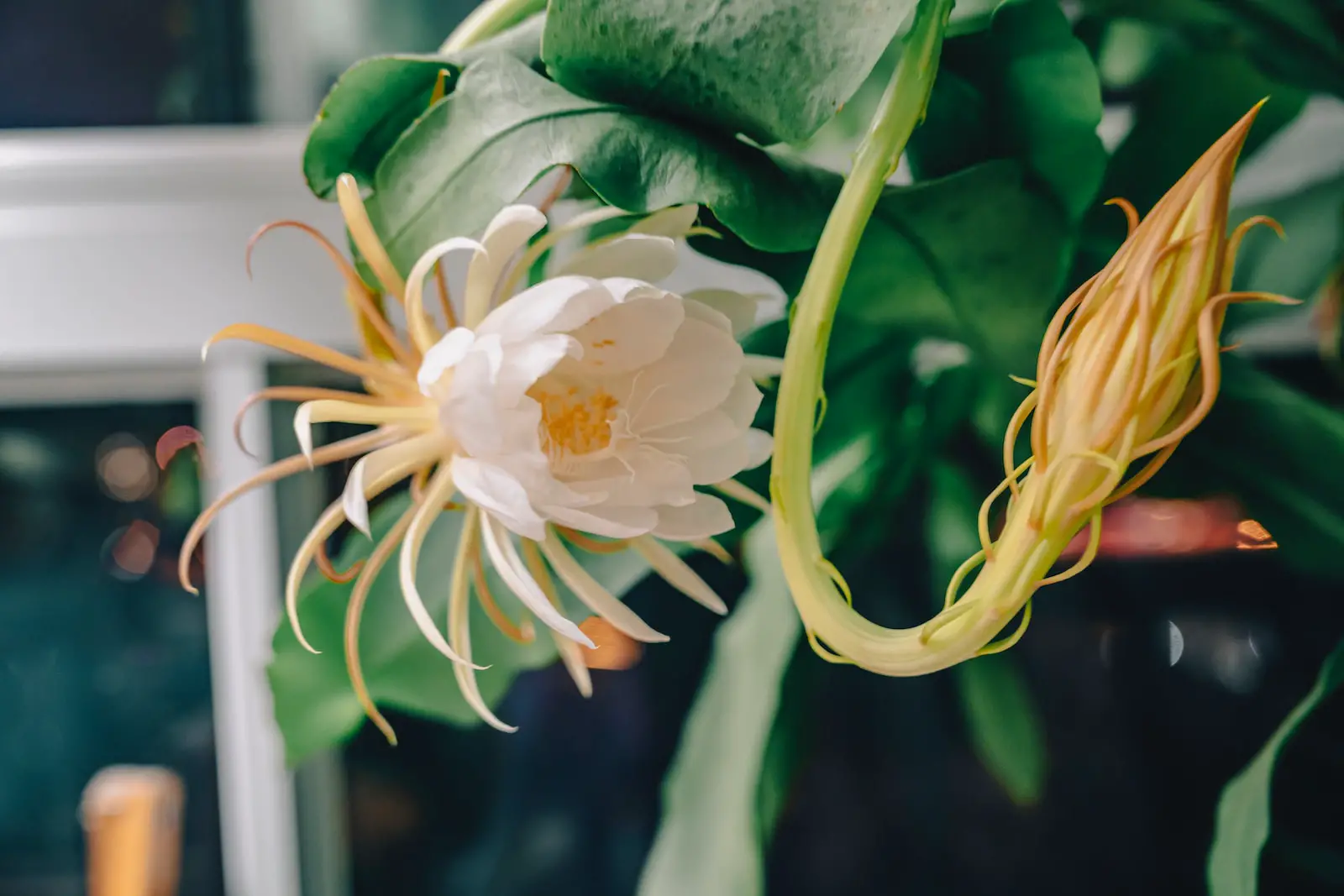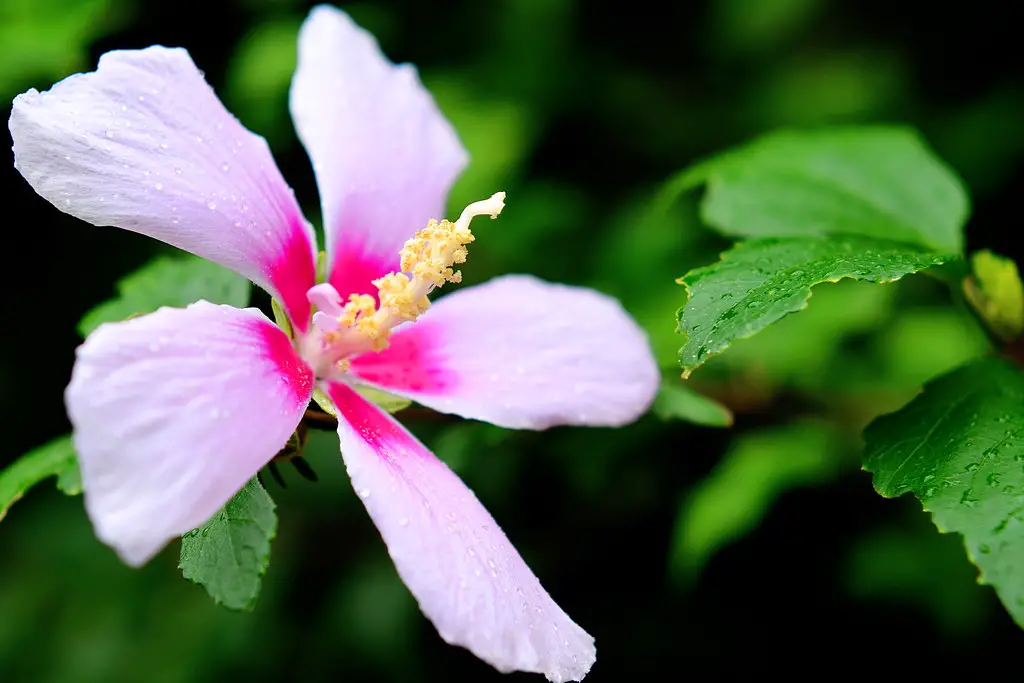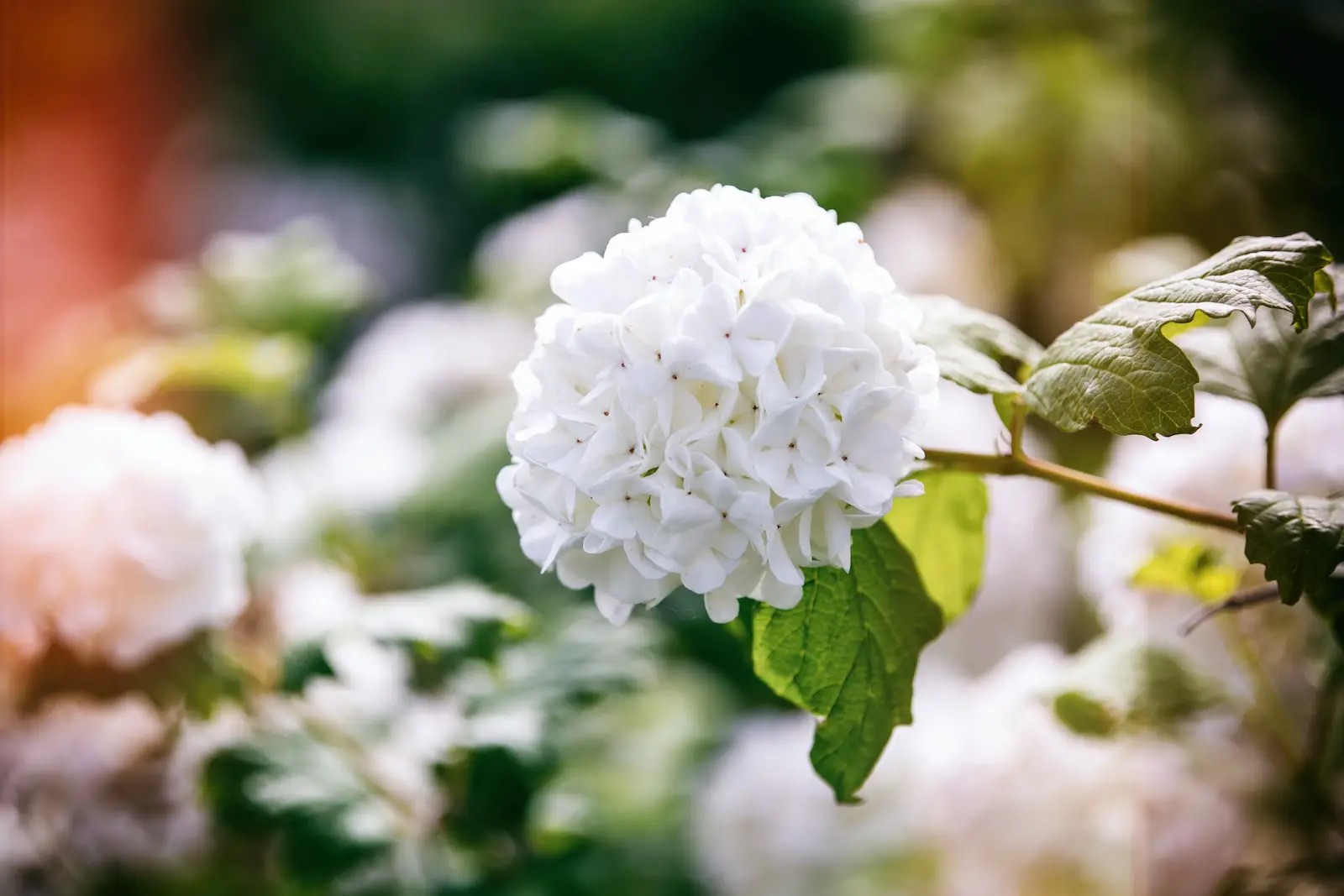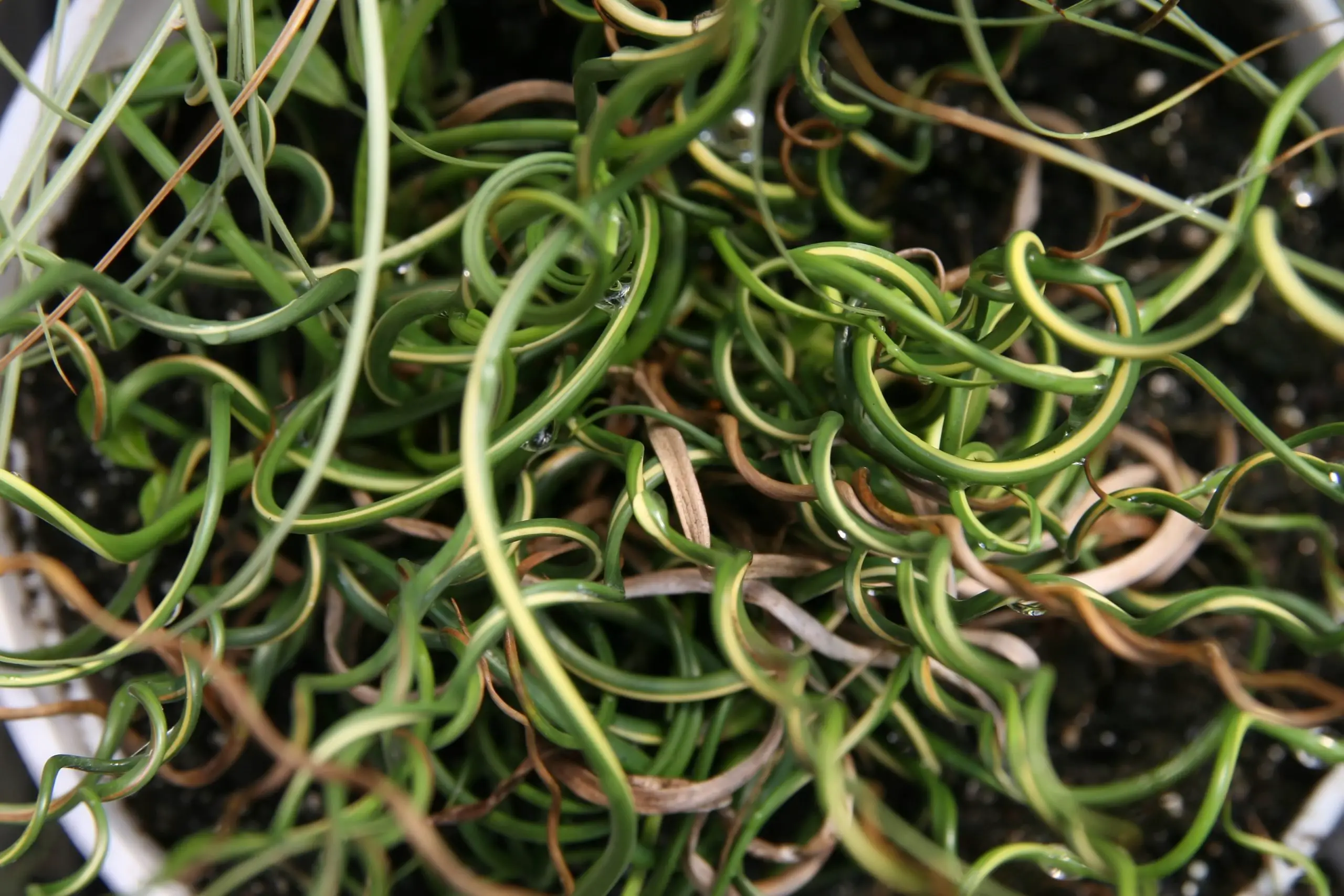Epiphyllum, commonly known as Orchid Cactus, is a remarkable group of epiphytic cacti native to the tropical forests of Central and South America. These plants are celebrated for their extraordinary and vividly colorful flowers that bloom mainly at night. With petals that range from reds and pinks to whites and yellows, the flowers of Epiphyllum can be several inches across, adding an exotic touch to any garden or indoor space.
Unlike the stereotypical desert cactus, Epiphyllums grow in the wild on trees or rocks, drawing nourishment from organic matter that accumulates around them. This unique growth habit has shaped their care requirements, making them somewhat different from other cacti. Adapted to environments where the light is dappled and the humidity is high, these plants offer an enticing challenge to the home gardener.
The hybrid forms of Epiphyllum have become particularly popular among plant enthusiasts. These hybrids are cultivated for their increased size and vibrant colors. The intrigue of the Orchid Cactus lies not only in its stunning appearance but also in the care and attention required to coax the plant into bloom.
| Attribute | Details |
|---|---|
| Common Names | Orchid Cactus, Epicactus |
| Botanical Name | Epiphyllum |
| Family | Cactaceae |
| Plant Type | Perennial epiphytic cactus |
| Mature Size | 2-4 feet tall |
| Sun Exposure | Partial shade |
| Soil Type | Well-draining, organic-rich soil |
| Hardiness Zones | 10-11 |
| Native Area | Central and South America |
Epiphyllum Care
Caring for Epiphyllum is a rewarding endeavor, particularly when the plant rewards the grower with its stunning flowers. These plants prefer a shaded or filtered light environment, as they naturally grow under the canopy of dense tropical forests.
The watering needs are more akin to other tropical plants than to desert cacti. They need consistent moisture during the growing season but appreciate a drier rest in the winter. Providing the right balance of water, light, and nutrients is key to achieving the coveted bloom of the Orchid Cactus.
Light Requirement for Epiphyllum
Epiphyllum plants prefer bright but indirect or filtered sunlight. Direct sunlight can scorch the leaves, while too little light may prevent flowering. Placing the plant near a north or east-facing window or providing shade during the hottest part of the day will typically offer the right amount of light.
Soil Requirements for Epiphyllum
A well-draining, organic-rich soil mix is essential for Epiphyllum. Commercial cactus or orchid mixes often work well, but you can also create your own mix by adding organic matter such as peat or compost and some sand to ensure proper drainage.
Water Requirements for Epiphyllum
Unlike most cacti, Epiphyllum requires regular watering during its growing season, allowing the soil to slightly dry between waterings. In the winter, water sparingly to mimic its natural rest period.
Temperature and Humidity
Epiphyllum prefers warm temperatures between 60-75°F (15-24°C) and higher humidity levels. During the winter rest period, cooler temperatures of around 50°F (10°C) are tolerated. Using a humidity tray or misting the plant can help maintain humidity.
Fertilizer
During the growing season, a balanced liquid fertilizer can be applied every 2-4 weeks. Some growers prefer a fertilizer with higher phosphorus content to encourage flowering. Fertilizing should be reduced or stopped during the winter months.
Pruning Epiphyllum
Pruning is generally done to shape the plant or remove dead or diseased segments. It can be performed anytime but is typically best after flowering.
Propagating Epiphyllum
Propagation is most commonly done through stem cuttings. Cut a healthy segment, let it dry for a few days to form a callus, and then plant it in the appropriate soil mix.
How To Grow Epiphyllum From Seed
Growing Epiphyllum from seed is a more complex and lengthy process. Sow the seeds in a well-draining mix and keep them moist and warm. Germination can take several weeks or even months, and the seedlings are often delicate.
Common Pests & Plant Diseases
Mealybugs
Mealybugs can be controlled using insecticidal soap or alcohol.
Scale
Scale insects can be scraped off or treated with horticultural oil.
Common Problems With Epiphyllum
Failure to Bloom
This often occurs due to incorrect light or feeding. Adjusting these factors can often induce flowering.
Root Rot
Caused by overwatering, particularly in winter. Ensuring proper soil and watering habits can prevent this issue.
Pro Tips
- Avoid repotting frequently; Epiphyllum prefers to be somewhat root-bound.
- Pay close attention to light levels, particularly if growing indoors, to encourage flowering.
- Water more sparingly during the winter months to prevent root rot.
- Regularly check for pests and diseases to catch any problems early.
- Use a winter cover or move the plant indoors if you live in a region where temperatures drop below the hardiness zone.



